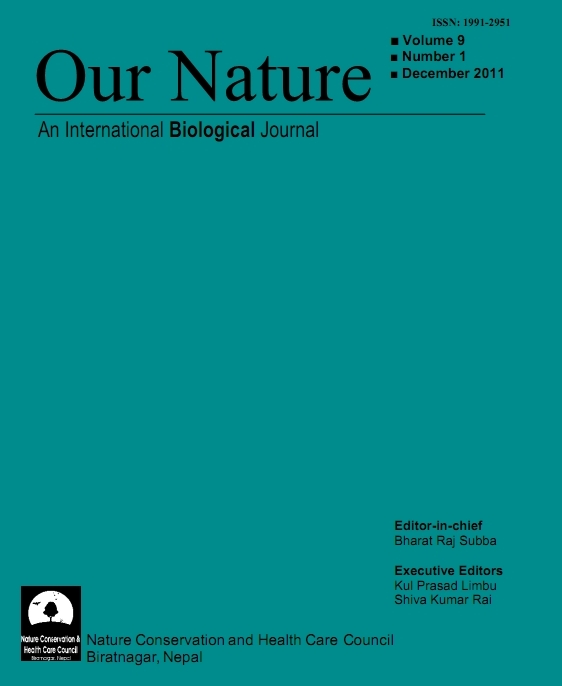Transhumance Effect on Husbandry Practices and Physiological Attributes of Chauri (Yak-Cattle) in Rasuwa District
DOI:
https://doi.org/10.3126/on.v9i1.5747Keywords:
Transhumance, Chauri, husbandry practices, Dairy Search IndexAbstract
This study was conducted in Rasuwa district, Nepal from 2008 to 2009 in Chauries (3 to 16 years) to analyze the transhumance effect in husbandry practices and physiological vitals. Physiological vitals were evaluated by 2×4 Factorial CRD with two levels of altitude (high- 3300 m and low- 1655 m) and four levels of age group (G1- ≤6 yrs, G2- 7 to 9 yrs, G3- 10 to 13 yrs and G4- >13 yrs); information regarding husbandry practices were collected from herders (n=60) using semi-structured questionnaire. Physiological vitals were taken from two altitudes, then analyzed for two- way ANOVA by Mstat- C and survey data by SPSS 16.0. Husbandry practices were found to be almost similar round the year except the matter of herbage supplementation during winter and early parturition. Rectal temperature, respiration rate, pulse rate and DSI showed significant increase (P<0.01) when animals were at low altitude pasture. Therefore, findings of this study revealed that transhumance system of Chauri management is herders' rational farming approach to make use of available pastures at different altitudes and have a distinct impact on rearing system and animals' physiology.
Downloads
Downloads
How to Cite
Issue
Section
License
This license enables reusers to distribute, remix, adapt, and build upon the material in any medium or format for noncommercial purposes only, and only so long as attribution is given to the creator.




